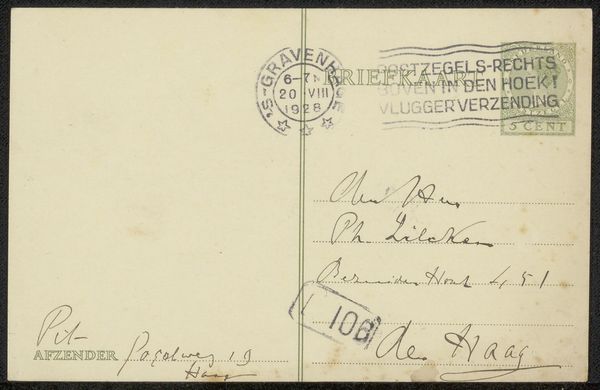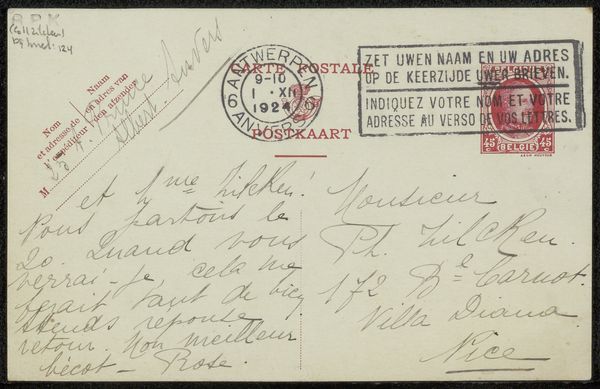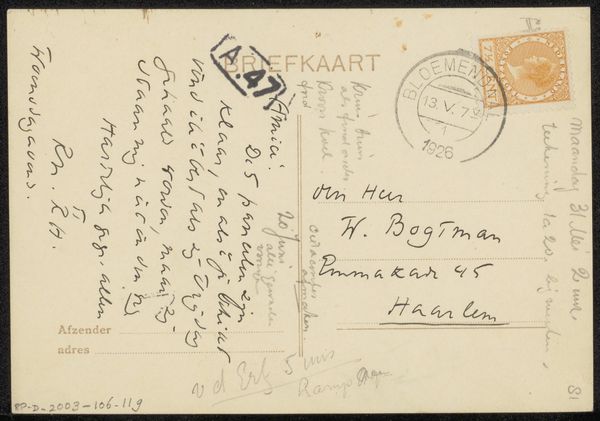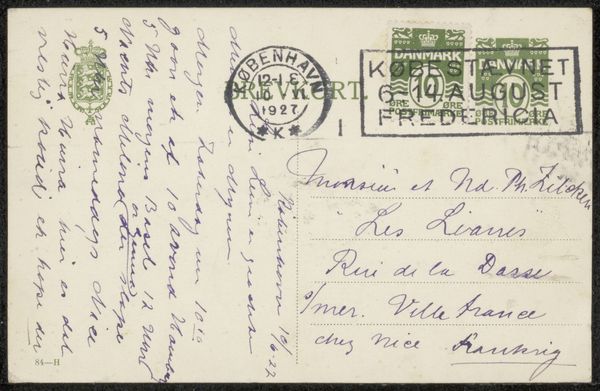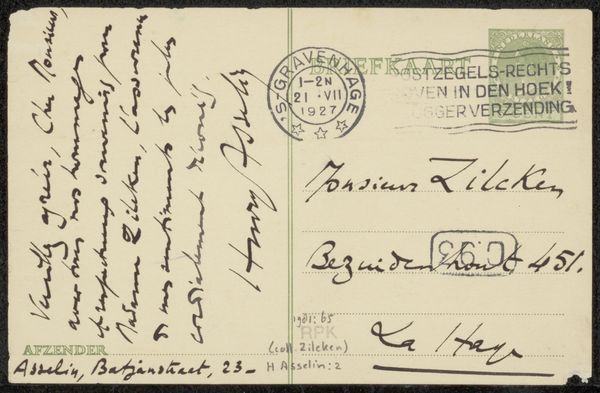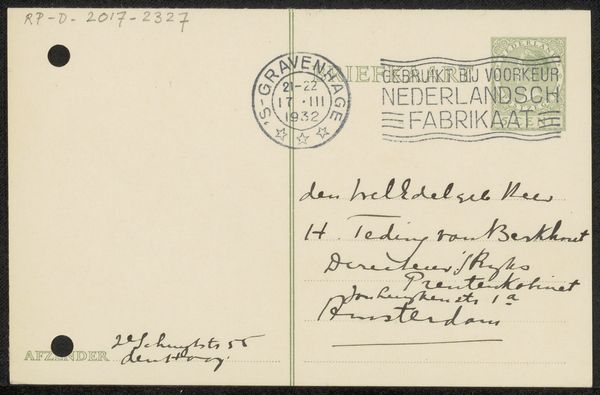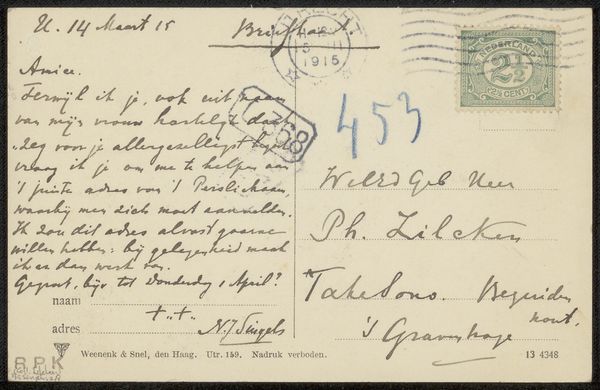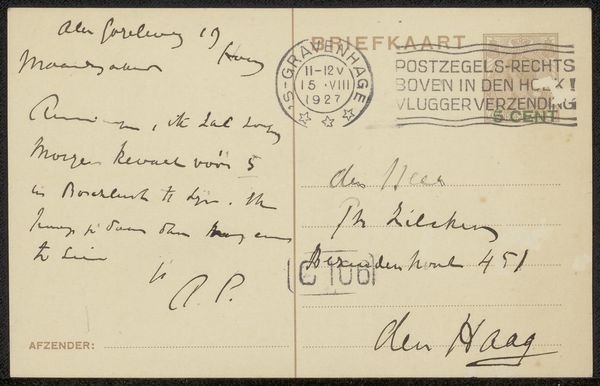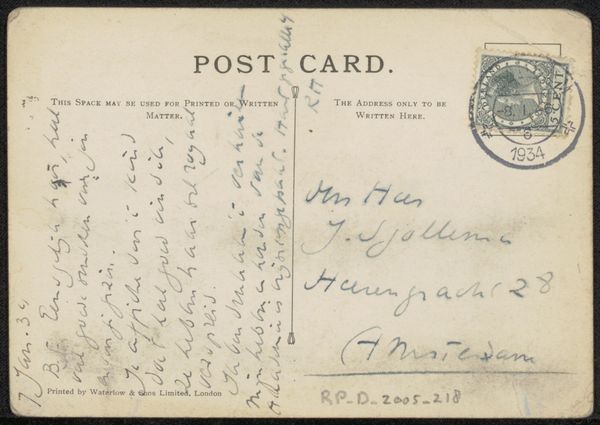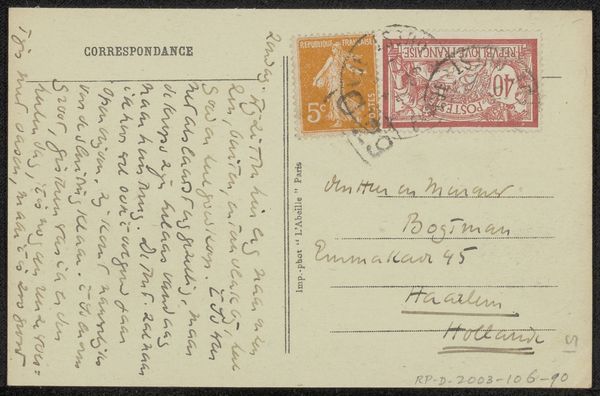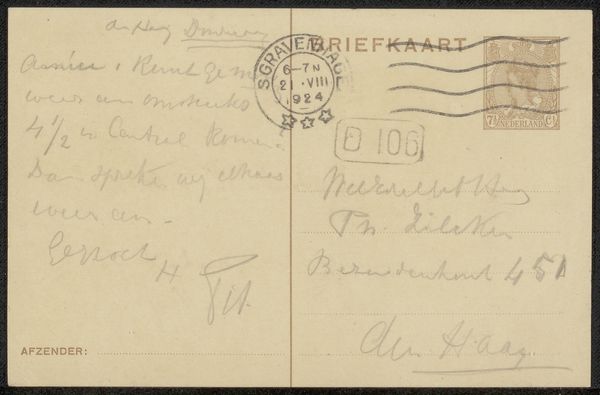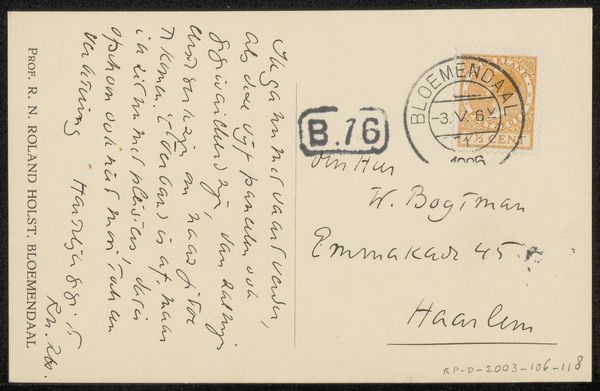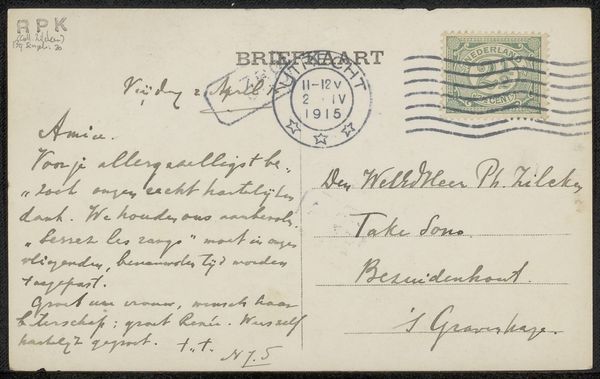
Prentbriefkaart aan Willem Bogtman Possibly 1930 - 1938
0:00
0:00
drawing, paper, ink, pen
#
drawing
#
pen drawing
#
paper
#
ink
#
pen
Copyright: Rijks Museum: Open Domain
Editor: This is "Prentbriefkaart aan Willem Bogtman," a pen and ink drawing on paper by Richard Nicolaüs Roland Holst, potentially created between 1930 and 1938. It strikes me as a very personal piece, with handwriting filling the surface. What can you tell me about it? Curator: Well, first, consider the materiality itself. The humble postcard, mass-produced, yet transformed here into a vessel of intimate communication. The pen and ink, almost a primal form of mark-making, contrasts sharply with the printed elements. The written script *is* the drawing. We see the artist's hand, his emotional state perhaps. Look at the loops, the pressure, the slant. Does it speak of haste, or care, or something else entirely? Editor: I see what you mean. It's not just a message; the *way* it's written becomes part of the meaning. The address and stamp turn it into more than personal correspondence. It became official. I imagine it traveling across a distance, carrying with it the weight of not only the sender's words but their intention to reach the recipient. It is a permanent mark. Curator: Precisely. Postcards are fascinating relics precisely for this reason; because in the age of emails or messages, one has to put it in the post. This also evokes historical and cultural meanings. The stamp itself is a carefully designed symbol of a nation, and then further defaced and annotated with postmarks, so there are stories hidden here. Also the contrast with typed letters is important, because that implies impersonality. How does knowing the work is located in the Rijksmuseum change the artwork, now part of history? Editor: I think that adds another layer. This personal correspondence is now something of historical and cultural value, worthy of preservation and display. What strikes me most is that personal everyday sentiments can speak about life back then. I now notice how rich and loaded such personal artifacts can become over time. Curator: Indeed, an unassuming material item which is now an image of culture. We began considering emotional marks and symbolic meaning through physical signs, all transformed through historical contexts.
Comments
No comments
Be the first to comment and join the conversation on the ultimate creative platform.
